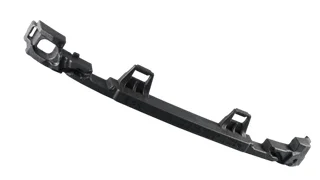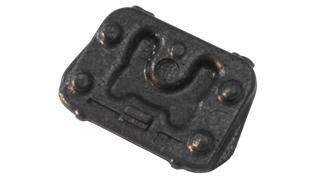The vehicles of the SUV type are considered to be safer than smaller cars. It results from the belief that their more massive construction protects passengers better in case of an accident. Are the weight and size of a car really decisive?
In general, it is believed that large and massive vehicles protect the users better during a crash. It originates from the laws of physics. The longer the crumple zone is, the better the car body transfers loads. It is worth to remember though, that all modern cars feature carefully designed systems of passive safety, which ensure maximum of protection. The mass of a vehicle is significant when a collision of two cars takes place. During a head on collision the larger car will push the smaller one out. Thus, the passengers of the larger car will be exposed to a smaller force than those in a smaller car. Even if both of the cars are equipped with high class safety systems. In the recent years, however, the manufacturers have made changes to “even the odds” for cars of different sizes.
Passive safety systems in SUV-s are to be changed
There is no doubt that in the case of a collision with a SUV a smaller car will be in a worse position, even if both of the vehicles have obtained the same results in the standard safety assessment tests. It is worth mentioning too that the SUV-s and pick-up trucks, which were manufactured until recently constituted larger danger for smaller cars. Their structures responsible for passive safety were located high. In some instances, a higher car could even run over the roof of a smaller car. A bumper located high and frequently made from metal, also posed a larger threat for pedestrians. Therefore, nowadays modern plastic materials are used in its production, which provide protection for all the traffic participants.
SUV and pick-up vs. small cars – safety tests of cars

The Institute for Highway Safety association performed analyses of accidents that took place in the beginning of the 21-st century. Special attention was paid to situations, in which there occurred crashes of two vehicles of different sizes. It turned out that the SUV-s and pick-ups manufactured at that time caused many more casualties in collisions with smaller cars than e.g., minivans. For that reason, over the recent years car manufacturers have implemented many changes in the passive safety systems. They depend not only on improvement of protection, but also on making these constructions more alike in various cars.
Can a small car be safer than an SUV?
The answer to this question is not obvious. The car date of manufacture and equipment have large meaning and so do the skills of a driver. The safety standards, construction solutions and technologies are still evolving. Therefore, a new small city car may provide better protection for the passengers than an older SUV. Cars feature much more sophisticated structures of passive safety nowadays. Their numerous elements are produced from very durable amortizing materials, as e.g., the expanded polypropylene EPP. It is also worth remembering that small cars are much more manoeuvrable and governable, which sometimes allows to avoid dangerous situations. Easiness of manoeuvring or parking can be a large advantage for less experienced drivers. Just to compare: ten years old, large vehicles featured less strengthened construction, which provided worse protection for the users in case of a car roll over. Also, they did not have the modern electronics and ESP system, which is important, especially in case of high cars. This solution was included among the compulsory equipment of vehicles only in 2012.
The secret of passive safety of modern cars

Every day we are not even aware of their presence. In extreme situations they are an efficient and sometimes the only protection of life and health of the users of every kind of vehicles. The base of the passive systems is the front controlled crumple zone. It absorbs most of the impact momentum still before the passenger cockpit. Moreover, it comprises many elements that have different functions. They are to stabilize a position of a body and provide comfort and also to transfer vibrations and gravity loads. Nowadays most of them are produced from modern expanded plastics such as e.g., the EPP. This material is used among other things to manufacture elements amortizing and masking a radiator, as it excellently suppresses impacts.
Also, it is durable enough, so it does not fall into pieces, but only gets deformed temporarily. You can find it too in car interiors. It is used to manufacture head rests which stabilize and protect cervical spine. When applied in back rests and seats it supports the body position. Whereas door filling made from it efficiently suppresses side impacts. Elements of ceiling lining and floor are made from the expanded polypropylene too. The EPP footrests provide comfortable position of legs while driving a car. It is worth to remember though, that the safety is decided first of all by drivers themselves and by the level of their concentration.